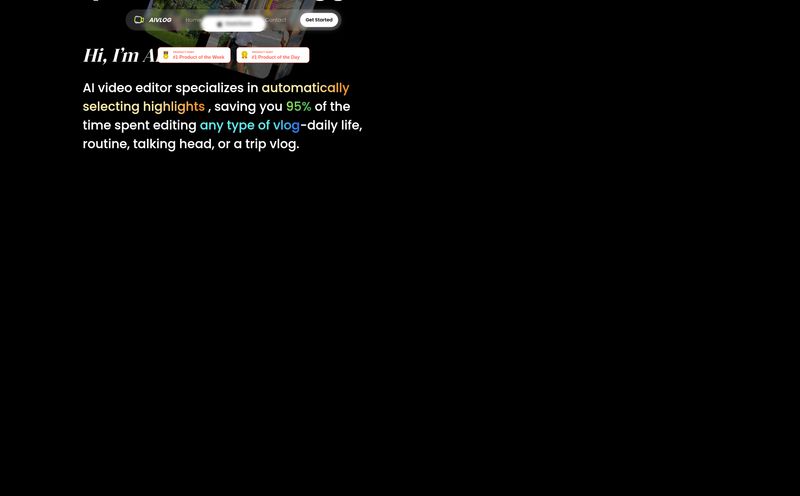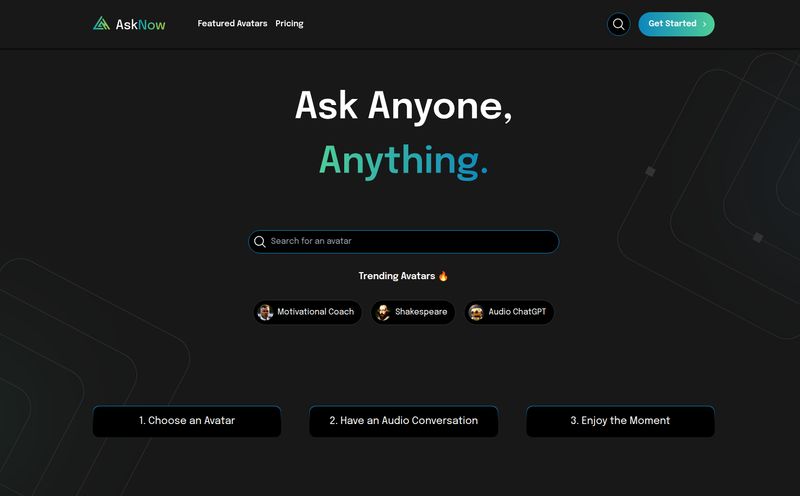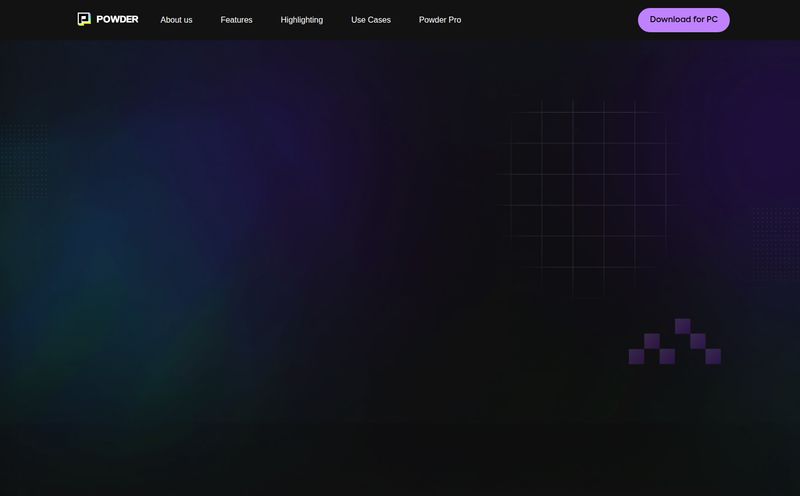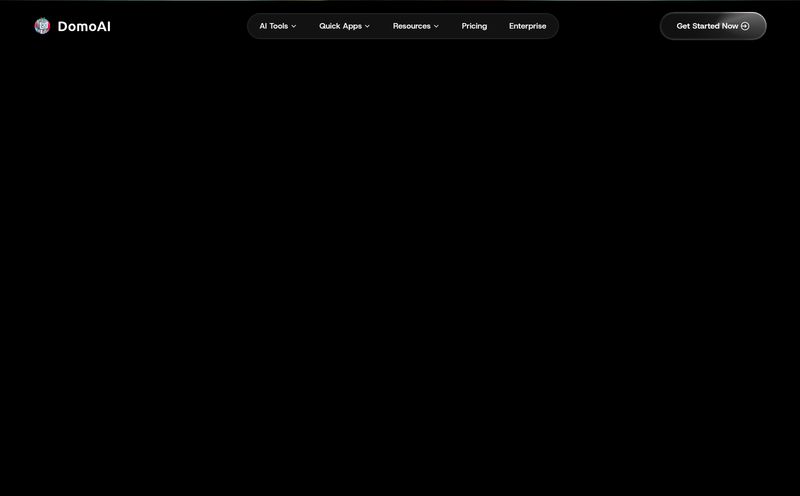I've spent more late nights than I can count staring at a blank video timeline, the blinking cursor mocking my lack of progress. The script is there, the vision is in my head, but the sheer grunt work of finding stock footage, animating text, and syncing audio can be… well, it's a drag. It’s the part of content creation that burns you out. We’ve all been there, right?
For the last year, the SEO and creator space has been buzzing with AI video. We've all seen the flashy, mind-blowing demos from OpenAI's Sora and thought, “Cool, but when can I actually use something like that?” It felt like watching a trailer for a movie that was perpetually “coming soon.”
Well, I think I’ve found a tangible answer. It’s called Focal, and it’s not just a demo. It’s a tool you can sign up for and start using right now. And I’ve been putting it through its paces. Is it the magic bullet for all our video production woes? Let’s get into it.
What Exactly Is Focal AI?
First off, let's clear something up. Focal isn't just another text-to-video generator that spits out random, disconnected clips. The whole idea behind the platform, from what I can gather, is more ambitious. It bills itself as an “AI-powered video creation software for making TV shows and movies.” That’s a bold claim. It's built for storytelling.
Instead of just giving it a one-line prompt, you can feed it a whole script. It helps you generate consistent characters and locations, and it gives you two different ways to actually edit your creation—one for people who love AI prompting and another for old-school editors who need that granular control. It’s like they tried to build a bridge between the wild west of generative AI and the established world of video production.
My First Impressions and Getting Started
Signing up was straightforward. The interface is clean, maybe a little minimalist, but it doesn’t overwhelm you with a thousand buttons. The first thing you see is a prompt box: “Make a video about…” This feels familiar, doesn't it? Like the starting point for ChatGPT or Midjourney.
I decided to throw a simple idea at it: a short, moody detective scene set in a rainy, futuristic city. I typed out a quick, three-line script. The platform took my script and started generating scenes. It wasn’t instantaneous, but it was faster than brewing a pot of coffee. What came back was a series of clips that actually… worked. The tone was right, the visuals were coherent. It wasn’t a finished product, but it was an incredible starting point. A first draft in minutes. That’s a win in my book.
The Standout Features That Caught My Eye
A few things really stood out to me as I played around with Focal. It's not just a single trick pony.
From Script to Screen in Minutes
The ability to generate a video from a script is the headline act here. For content creators, YouTubers, and marketers, this is huge. Think about it. You can take a blog post, a customer testimonial, or a product description and turn it into a video script first draft almost instantly. It’s a massive roadblock remover for anyone who struggles with that initial creative inertia.
Editing with Chat. Yes, Really.
This was the feature that felt the most futuristic. Focal has a chat-based editor. You can literally type commands like, “Change the third shot to a wide angle,” or “Make this scene more suspenseful.” It’s like having a tiny, tireless assistant director you can just throw instructions at. It doesn't always get it perfect on the first try—sometimes the AI’s interpretation of “moody” is a bit heavy-handed—but the potential here is just staggering. It makes complex edits accessible to people who've never touched a keyframe in their life.
The Good Ol' Timeline for Control Freaks (Like Me)
Here’s what sold me, though. Alongside the fancy chat editor, there’s a traditional timeline. A proper one. You can drag clips, trim them, adjust pacing, and get your hands dirty. This is critical. It shows that the Focal team understands that for any serious video project, you need precise control. The AI gets you 80% of the way there, and the timeline lets you polish that final 20% to perfection. It’s the best of both worlds, and frankly, any AI video tool that omits this is just a toy in my opinion.
The AI Models Under the Hood
Here's where my inner SEO/tech nerd gets excited. Focal isn't trying to reinvent the wheel with a single, proprietary AI model. Instead, it integrates a suite of what they call “best-in-class” models. On their FAQ page, they list names like Vevo, Seedance, Kling, Minimax, and Luma for video. For images, they tap into powerhouses like Stable Diffusion, Midjourney, and Ideogram. And for voiceovers? The one and only ElevenLabs.
Why does this matter? Because it means Focal can stay on the cutting edge. As these individual models improve, Focal can integrate the updates. You're not locked into one company's tech. You're getting a curated 'greatest hits' collection of generative AI tools, all working together. It’s a smart, sustainable approach.
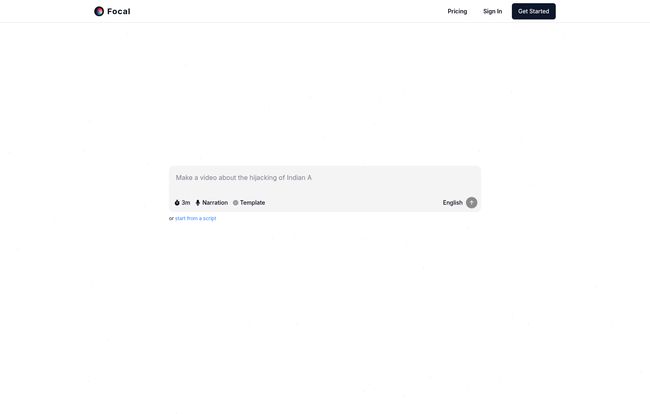
Visit Focal
Character and Location Consistency (A Big Deal in AI Video)
Let's be real, the biggest joke in AI video generation so far has been consistency. You generate a shot of a character, and in the next shot, they have a different shirt, three extra fingers, or have suddenly changed ethnicity. It shatters the illusion completely.
Focal explicitly states that they support consistent characters and locations. In my tests, it was surprisingly good. My detective character kept his trench coat and general facial structure across different scenes. It's not perfect yet, but it’s a massive step forward. This reminds me of the early days of AI image generators, remember trying to get Midjourney v3 to give you the same person twice? A total crapshoot. Focal seems to have learned from that struggle, and for anyone trying to tell an actual story, this feature is non-negotiable.
Let's Talk Money: Focal's Pricing Plans
Alright, the all-important question: what’s it going to cost me? The pricing structure is based on credits, which is pretty standard for AI tools. Here’s a quick breakdown:
| Plan | Price | Monthly Credits | Key Features |
|---|---|---|---|
| Free | $0 /month | 100 initial, then 30 daily | Watermarked videos, no export, no commercial use. Good for testing. |
| Starter | $10 /month | 1,000 | No watermark, commercial use, ~4 minutes of video. |
| Standard | $30 /month | 3,900 | Everything in Starter, plus ~16 minutes of video. |
| Pro | $100 /month | 15,000 | Everything in Standard, plus ~62 minutes of video. |
My take? The Free plan is a perfect sandbox. You can learn the tool and see if it fits your workflow without spending a dime. The Starter plan at $10 is a really low barrier to entry for creators who want to produce a few short, high-quality videos for social media or their website. The Standard and Pro plans are clearly aimed at power users—agencies, dedicated YouTubers, or indie filmmakers who are integrating this heavily into their production process.
The Not-So-Perfect Parts (An Honest Look)
No tool is perfect, and Focal is no exception. It’s important to go in with realistic expectations. The biggest thing to be aware of is the credit system. Your monthly credits expire at the end of the month. They don't roll over. This means you need to have a “use it or lose it” mentality, which might not sit well with everyone, especially if your creation schedule is sporadic.
Also, the free plan is quite restrictive. The watermark and inability to export means it’s purely for experimentation. You have to jump to a paid plan to get anything you can actually use, which is fair, but good to know upfront.
Who is Focal For? (And Who Should Skip It?)
So, who should be rushing to sign up for Focal?
In my opinion, it's a fantastic tool for indie filmmakers, solo content creators, YouTubers, and social media marketers. If you have big ideas for story-driven content but lack the budget, team, or time for traditional video production, Focal could be a revelation. It dramatically lowers the barrier to creating visually compelling narratives.
Who should maybe hold off? If you're a high-end production house needing flawless 8K cinematic footage for a blockbuster movie, this isn't going to replace your RED camera and VFX team... yet. Also, if you’re looking for a simple, one-click tool that requires zero creative input, this might be a bit more involved than you’d like. It’s a tool that helps you create, not a machine that creates for you entirely.
Frequently Asked Questions about Focal
- Can I use videos made with Focal for commercial projects?
- Yes, you can! Any of the paid plans (Starter, Standard, or Pro) grant you the right to use your creations commercially. The Free plan is for personal use only.
- Which AI models does Focal actually use?
- It uses a combination of top models. For video, it taps into things like Vevo, Kling, and Luma. For images, it uses Midjourney, Stable Diffusion, and Ideogram. Voice generation is powered by ElevenLabs, a leader in that space.
- Do the credits I buy expire?
- Yes, the monthly credits that come with your subscription expire at the end of your billing cycle. They do not roll over. So, make sure to use them up!
- How much does it cost to generate video?
- The credit cost varies depending on the AI model you use. For example, a 5-second generation might cost 15 credits with one model and 25 with another. Voice generation is much cheaper, at about 0.01 credits per character. It's a bit of a learning curve to manage your credits efficiently.
- Can I really get consistent characters in my videos?
- Yes, Focal has a feature designed specifically for generating consistent characters and locations, which is a major advantage over many other AI video tools. It's one of its strongest selling points for narrative work.
- Are there any discounts available?
- The pricing is pretty set, but their FAQ mentions that they occasionally sponsor projects. If you have a big idea but can't afford a plan, they suggest reaching out to them at [email protected]. Can't hurt to ask!
Final Thoughts: Is Focal the Future of Storytelling?
So, back to the big question. Is Focal the future? I think it’s a very important part of it. It’s not the fully autonomous Hollywood AI director of our sci-fi dreams, but it’s something more practical and, right now, more useful. It's a powerful creative partner.
It takes the most tedious, time-consuming parts of video creation and automates them, freeing you up to focus on what really matters: the story, the pacing, and the emotion. It democratizes the ability to create visually rich narratives. I’m genuinely excited to see what creators build with this. It's not perfect, but its a massive leap in the right direction. And for a creator who has stared at that blinking cursor one too many times, that’s more than enough to be optimistic about.
